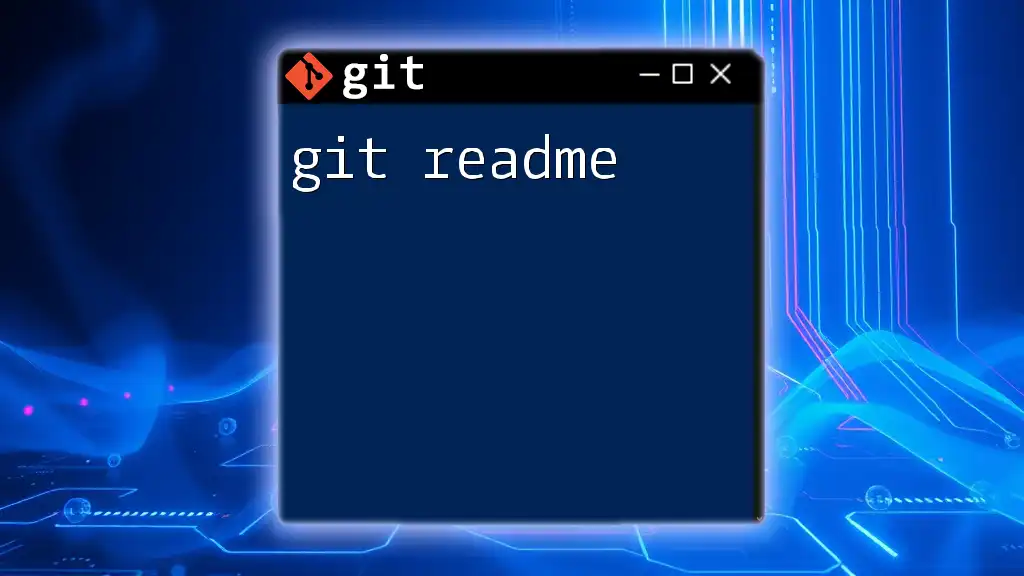The `git range-diff` command allows you to compare the differences between two commit ranges, making it easier to see how changes have evolved over time.
Here’s an example of how to use it:
git range-diff HEAD~3 HEAD
Understanding the Basics of Range Diff
`git range-diff` is a command that allows users to compare two sets of changes, making it possible to see how a range of commits relates to another range. It becomes particularly useful in scenarios like code reviews or decision-making between different feature branches. The ability to compare adjustments across various points simplifies understanding the impact of changes made over time.
When to Use `git range-diff`
You might want to use `git range-diff` in cases such as:
- Comparing feature branches before merging.
- Reviewing your commits against someone else's before a team integration.
- Understanding enhancements across different versions of your project.
Benefits of Using Range Diff
Using `git range-diff` has a plethora of benefits:
- Improved Clarity: Evaluating changes side by side provides clearer insights.
- Efficient Collaboration: Makes the code review process seamless among team members.
- Enhanced Decision Making: Helps in deciding which changes to keep or discard prior to integration.

Syntax of Git Range Diff
To run `git range-diff`, you'll utilize the following general structure:
git range-diff <base-commit> <compare-commit>
Detailed Breakdown of Command Options
-
`<base-commit>`: This is typically the commit you wish to compare against. It can be referenced as a SHA-1 hash, HEAD, or any branch name.
-
`<compare-commit>`: This represents the commit or range of commits you want to investigate.
Example Command:
To illustrate, you might run:
git range-diff abc1234 def5678
This command will show differences between the two specified commits.

How to Use Git Range Diff Effectively
Comparing Two Commits
To compare two specific commits directly, simply provide their hashes:
git range-diff <commit1> <commit2>
Suppose you execute:
git range-diff a1b2c3d a4e5f6g
The output will display differences in file changes, showing you what was added, modified, or removed from the first commit through to the second.
Comparing Branches
To analyze the differences between branches, you can execute:
git range-diff <base-branch>..<feature-branch>
For instance:
git range-diff master..feature-branch
This comparison will provide a detailed view of modifications made on the `feature-branch` against the latest state of the `master`.
Practical Scenario: Reviewing Code Changes
During a code review, it's essential to have clarity on what has changed to facilitate effective discussion. By executing:
git range-diff master...feature-branch
You can lay out the changes in a clean format for review. The output summarizes files altered between `master` and `feature-branch`, along with a respective breakdown of additions, deletions, and modifications.

Advanced Features of Git Range Diff
Utilizing Diff Formatting
Git allows for different diff formats to enhance the readability of your comparisons. Options like unified or side-by-side diffs can be invaluable.
To apply, consider the following command:
git range-diff --word-diff
This variation highlights changes at the word level, making it easier to spot minute alterations that may otherwise be overlooked in a line-based comparison.
Customizing Output
You can customize the output further using option flags. For instance, to get a colored diff view with statistical information, you can run:
git range-diff --color --stat
Adding these flags helps tailor the output to suit your needs, allowing you to focus on what's most important.

Common Issues and Troubleshooting
While using `git range-diff`, you may encounter several common issues:
-
Incorrect Range Specified: If you accidentally specify an invalid commit range, you'll receive an error message. Always double-check your commit references.
-
Understanding Diff Output: The output might seem overwhelming at first. Familiarize yourself with diff outputs by reading through Git documentation or using resources that specifically explain diff formats to ease the learning curve.
Tips for Effective Troubleshooting
Start with verifying that the commits and branches you are comparing actually exist by listing them with:
git log --oneline
This practice can prevent confusion and help clarify the commit history you are evaluating.

Conclusion
With its powerful features, `git range-diff` greatly enhances the process of evaluating changes within Git. This command enables a more informed decision-making process during code reviews and integration. Familiarity with its syntax and applications will not only increase your proficiency in managing codebases but also streamline collaboration in any development environment.

FAQs on Git Range Diff
What is the Difference Between `git diff` and `git range-diff`?
`git diff` typically compares the working directory with the index or a specific commit, whereas `git range-diff` allows you to compare entire ranges of commits, providing a broader overview of changes over time.
Can `git range-diff` be used with multiple ranges?
Yes, using specific syntax, you can compare multiple ranges. However, ensure that the commits and branches involved are well defined to avoid errors.
How does `git range-diff` help in the rebasing process?
During rebasing, `git range-diff` is particularly useful for ensuring that the series of patches you're applying are correctly represented against the commit history. It offers a reliable way to visualize differences before modifying commit history.
By exploring `git range-diff`, developers can enhance their workflow, ensuring that every change is purposeful and well understood.

















